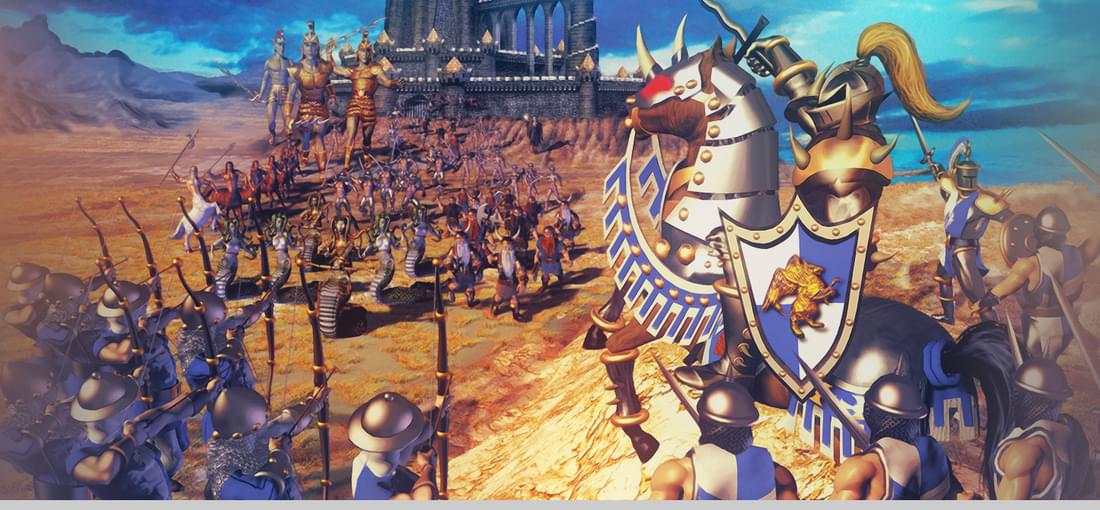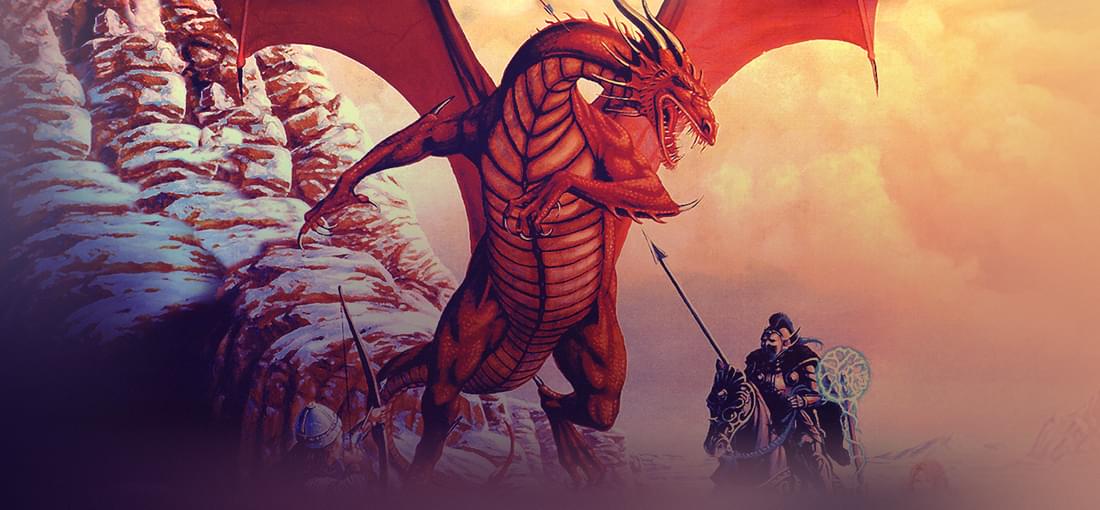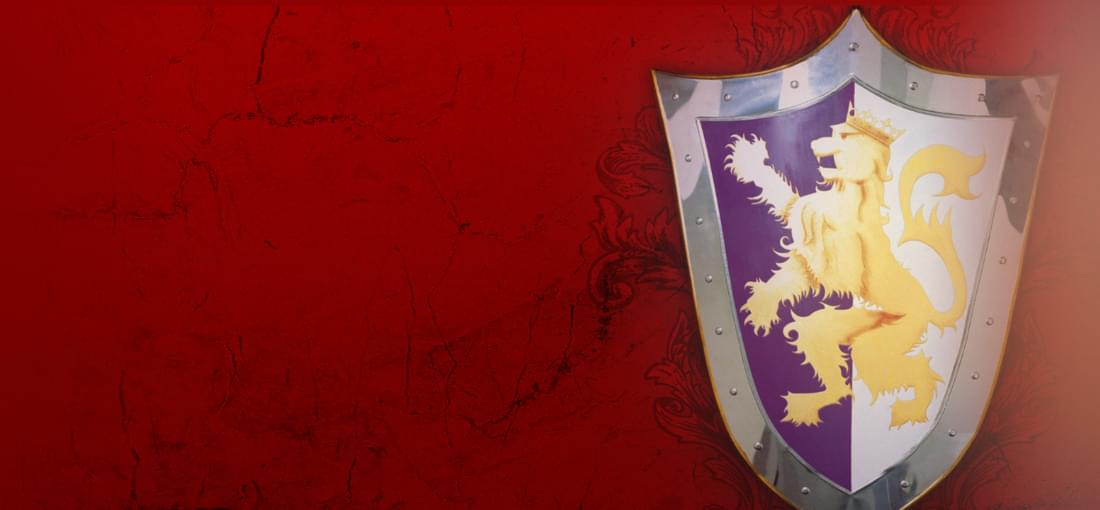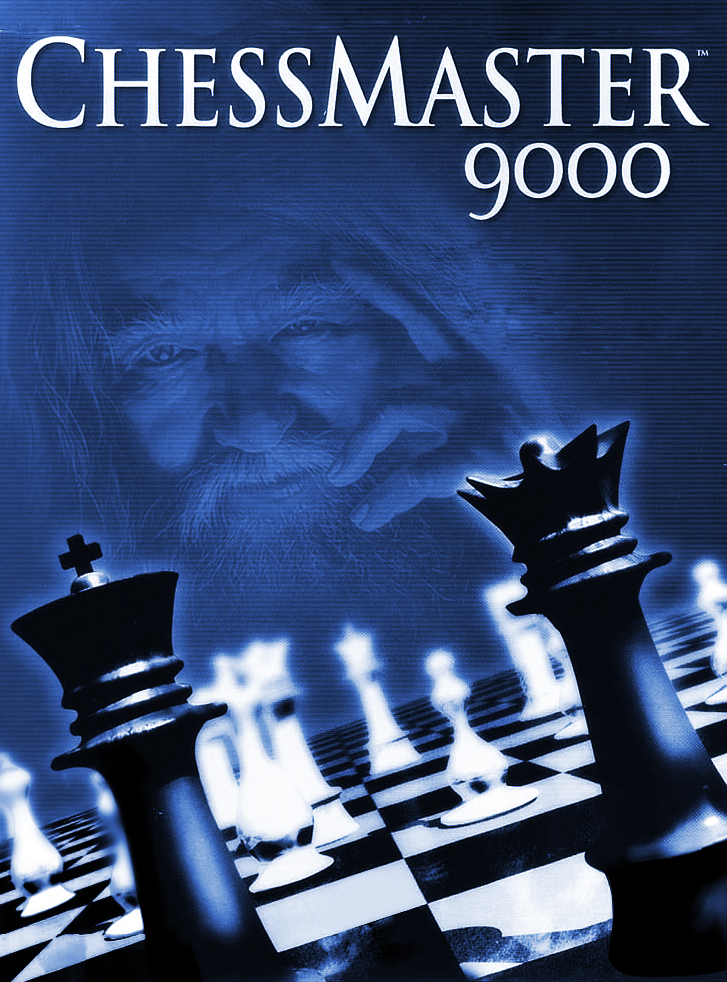


If you read my review to Heroes of Might & Magic (HoMM) 2 Gold, I can make it short: This is basically the same game but even better, while it has more difficult campaigns. The story plays when Catherine Ironfist becomes queen of Erathia and has to fight against the "devils" (or rather Kreegans) to restore peace in Erathia. Well, the gameplay, as said before, is quite the same. Again, one commands heroes that run around with creatures to collect resources, explore the map, fight other creatures, fight other heroes, conquer towns, sometimes defend own town, etc. - much like in HoMM 2. If I remember it correctly, here level limits for heroes were introduced and heroes could be taken across campaign levels. Actually, it was my bad skill in this why I stopped playing HoMM 3 after a while. There's a mission where one has several heroes (four or eight) in the second campaign, and that became too much for me at that time since I was used to do everything with a single hero. Well, the improvements over HoMM 2: There are nine town types now (eight without addons), with even more buildings per town. There are more objects to find on the maps, in render graphics. The ambient sounds are also better. There are more spells, more creatures, more artifacts, more victory conditions, etc. - there are also more maps and campaigns! So the game becomes more complex but not so complicated that one really needs to read the manual. To me, this is still the best of its genre (turn-based-strategy). HoMM 4 and 5 are also good games, but 5 is annoying to always adjust the view so one sees everything, while 4 concentrated more on different aspects, making also a very good game, only slightly worse to me than HoMM 3. There might be much more to write about HoMM 3 but I suggest you just to play it or - if you don't want to buy it directly - test the demo version. Tip: You might also want to install "In The Wake of the Gods", an inofficial freeware addon for HoMM 3 (see the thread in the forum for details).

At around 1995, we had a magazine series that brought top games for incredibly low prices called "Bestseller Games". When they had Might & Magic IV and Might & Magic V in two issues, my father brought it to me and we installed it. He said it is a great game, showed me the basics and we played a bit but I didn't like it much at first. The interface was a bit too complicated to me. However, when we went through Vertigo, killed some slimes, got to a wish fountain and I learnt about the skills (of which many seemed useless to me until I found a description about a few years ago) and shops it became much better. Then we accepted quests and did some. The characters got exhausted at some point and needed rest which refilled hitpoints and magic. One shop sold magic, another one weapons. Sometimes items were hidden somewhere. Well, in short: I got sucked into the game. So much that I can say now, I was done with it when I finally beat the worst of all monsters on the World of Xeen. It plagued me for years that I was able to win the game easily but had no way to defeat this monster that (spoiler) was still alive at the sky roads above the castle of Sheltem. Until I finally beat it, more than ten years after I won the game, in 2007. Of course after winning the game and playing through it a few more times in the following years I didn't play it often but it still bothered me. Now I can say, I beat Might & Magic: World of Xeen. Might & Magic III played much like WOX but with slightly worse interface and animations running too fast (thankfully this has no influence on the turn-based movement and combat). Eventually, I also beat it. On christmas 1998, I got Might & Magic VII and it was quite a fun game but it didn't feel the same anymore. Personally, I think the change to 3D with all consequences, with the new engine (used from MM6 to MM8) was debatable while MM9 is not much Might & Magic anymore but instead an RPG with a few puns that doesn't play very well but would still be a good game without the bug that the arena crashes. However, part 1 to 5 belong to the classics of turn based RPGs and at least part 3 to 5 are highly enjoyable. Part 6 uses the 3D engine and is quite fun but the graphics are horrible (those of 7 were the best of the three games that use that engine). I played part 1 as well and one must get used to it but then it seems quite good also except for the high difficulty. One however needs to write the maps down or use maps from the internet since there's no automap feature. I didn't play part 2 much yet. If you like classical RPGs, buy this and you'll love part 3 to 5. You also may want to give part 6 a shot, but expect it to be different than the first five parts. It won't feel like a real Might & Magic when you first play it. Treat it as a bonus game, see if you like it and if not, stick to the at least weeks of fun with the other games. Just a bit about the game mechanics at the end. You walk around, gain experience and get levels when you train in certain buildings found in each town (training halls). Levels make you better. You sometimes find stat-enhancing things that either give permanent or temporary status enhancements. You can create own characters in taverns or can go with the good-balanced starting group. For challenges you could try a party with only spellcasters or only fighters, without a thief. Certain (optional) things need certain stats. For example, opening boxes needs a certain might. Everything is turn-based, you can stand two fields away from a monster and shoot arrows or magic at it and it will move one field towards you if it isn't defeated yet. On the other hand, a few monsters also can shoot magic at you. For the most of the game, one will go into melee combat and beat the monsters with his X moves per turn (that increase with levels and essentially give additional damage that is calculated when one uses a melee weapon). Well, best is you find out for yourself why Might & Magic once was one of the greatest RPG series, named in one row with Ultima and Wizardry, before it became 3D. Personally I didn't play Ultima (except part 1) and Wizardry, though. My impression: Graphics: Well, see the screenshots. Either you like it or you hate it. I like it because it's comic-like without looking like a comic. Overall 7/10, with part 3 to 5 being the best Sound: Nothing special. Overall 5/10, with part 6 being the best Gameplay: 8/10 - losses mostly to missing features in part 1 and the change in part 6 Atmosphere: 10/10 - once it sucks you in, you won't get out (at least for part 3 to 5) Overall: 8/10 Part 1: 6/10 Part 2: not played Part 3: 8/10 Part 4+5 (WOX): 10/10 Part 6: 8/10 Swords of Xeen: undecided, but see it as a bonus game made by fans

While I did not buy this yet off gog.com (but I surely will!) I have Heroes II here without the addon. So I can't say anything about the addon yet but just about the basic program. The game puts you - other than the main series "Might & Magic" into a turn-based strategy game. Now I don't like turn-based strategy much but a few brillant games are an exception here, especially such with more depth than battles only. Among turn-based strategy, I especially like games with global conquest much - Master of Magic, Master of Orion II, Civilization I and IV, Alpha Centauri - and the Heroes of Might & Magic series. When Might & Magic still had great comic graphics - the most recent part was the grandios "World of Xeen" - New World Computing used the characters from that game to make a turn-based strategy game with roleplay and (very basic) economical elements, advancing greatly their game "King's Bounty". One year later the sequel to this game appeared, and that's what we have here. Who liked the original Heroes of Might and Magic will love this game. The story is not really interesting - something about a war between the evil Archibald and the real prince Roland for the kingdom of Enroth. Let's come to the different aspects of the game. With exception of a few rendered videos, it is full 2D. The pictures above give a good impression of how the game is like. This is however nothing to complain about. I personally like the comic look and 2D more than the isometry of Heroes 4 or the 3D of Heroes 5. The sound is nice but on the quality as sound was in 1996. It's just standard sound, no orchestration or so, but fitting to the scenario. The gameplay is easily done by mouse. You go around, capture resources, mines, sawmills etc and dens with creatures. Also there are special buildings that for example give you +2 luck for the next battle. Talking about battles, there are several factors which influence how the creatures you can train in your towns (with fixed numbers being added each Monday) will fight, other than their attributes. Morale and Luck play a certain role that can easily give the edge. If your luck or morale is low, you have a chance of only do half the damage (or was it minimum?) or not move at all. The opposite happens with high luck - chance to deal maximum damage - and morale - chance to move twice per round. Monsters strike back when attacked, but not under certain circumstances, for example when an archer shoots at melee monsters the melee monster is just too far to strike back. Some monsters also have special attributes, for example monsters of Death cities (Necropolis) cause morale loss among living creatures if fighting in the same army. Monsters are stacked so you have for example one stack of 100 bowmen in a hex field instead having to move 100 bowmen one after the other. The battles are done on hex fields, as I said. Best is to look at a battle picture to see what I mean. Heroes also can fight but only by casting spells. After a lost battle by losing all monsters, a hero deserts and can be found in a random inn later. If he retreats before the battle is over, instead, he loses the battle and all monsters with him but will appear instantly in the inn of that player again. This is an important thing to know since heroes level up with experience gain to get better attributes which strengthen the monsters. They also can hold artifacts that can be randomly found in chests or special buildings, often guarded by monsters. Also, a skill system makes heroes even stronger by having them learn skills for their classes like pathfinding, saving movement points on the world map. The world map has a fog of war above it. The campaign itself also is slightly dynamical. You have on free games six kinds of cities to choose from, with six to seven unique monsters each (not counting their upgraded forms). They all need different resources - for example, knights would rely on gold while wizards need more crystals for their cities - but luckily you can build market places that (expensively) allow you to trade resources. Multiplayer is supported via Hotseat, LAN and TCP/IP (I think). The game has a map editor that can be used to create maps. However, they can only be deathmatch maps (I don't know if this was changed in the addon included on gog.com since I didn't buy it from here yet). Since it has a random map function, one can create good maps to play against friends or the computer. If I remember correctly, they also can be blindly saved, i.e. without you seeing it before (or was this included as late as in Heroes III?). But even if not, it can't be too hard to just click save and do that without looking at it. From what I read on internet, the addon contains a building that makes ghosts recruitable. Since they are very powerful, this might destroy balancing. It's also possible one can run into the "One more turn" phenomene: I will just do one more turn, just until my building is upgraded, just defend myself against this attack, just conquer this one city, just win this scenario, just have a glimpse at the next one, just do the first week, just... wait, why is it becoming bright outside again, is the night already over? Ok, just one more turn before I go to bed... and one more... and just this week... However, to me the scenarios around 5 or 6 became too difficult, so I always stopped there... My opinion Graphics: 10/10 Sound: 8/10 Gameplay: 8/10 Map editor: 8/10 Atmosphere: 9/10 Overall: 9/10

While ChessMaster 9000 offers the possibility to play games on a level that should be good enough for every beginning and intermediate player as well as many good players, it is just a computer program. For this reason, there's a multiplayer modus via LAN, TCP/IP and ubi.com which I didn't test. For more "professional" users like me, the program has several holes like the database format that however is exportable to PGN. I still use Fritz for database functions and another online service (Free Internet Chess Server) for playing. ChessMaster 9000 is supporting endgame databases with up to five pieces and a tool can be downloaded, according to internet sources, to create these for it. Today's standard is six pieces so this also is a flaw. However, ChessMaster 9000 has some particular strength that other chess programs don't have at this price: The training. The program has good but not overloaded interactive tutorials with - however - a few small mistakes. In one example the white king must go to e1 from e3 and only one of the three routes counts as correct solution. Apart from that, it is a great teacher. This was the main reason why I bought the game. Let's come to the parts of training. For beginners, there's an explanation of how pieces move and on easy tactical concepts like forks, skewers, pins and checks. There's also a kids room with some pieces that seem to be especially designed for kids. For adults there's the normal gaming room but also here the AI can be scaled from beginner to grandmaster by the personality settings. Apart from the big amount of pre-created settings one also can define own settings. This way for each strength a good opponent can be found. Intermediate players will find tutorials about strategical concepts as well as an endgame quiz (that I'd think is more for advanced players). A rating exam by Bruce Pandolfini is given then and one can practice openings. For advanced players, finally, ten games are given where one can try to find moves that were played by grandmasters and world-class players. The drills include, however, still what I'd consider for beginners and intermediate ending mates. The only one that fits to advanced would be bishop and knight versus king. Sadly, one only can try the mates but no tutorial is given. This is especially bad for bishop and knight where one should learn how to do it by the strategical manoeuvres (like the W manoeuvre) instead only by trying. In the end, one can solve 50 "puzzles" (chess compositions) selected by world solving champion 2004 John Nunn. These include only orthodox pieces, but range from directmates over studies to helpmates and a few retro puzzles. As an example, puzzle 47 goes: "A game starts 1 e4 and ends on move five when a knight takes a rook, delivering mate. What is the game?" John Nunn states that anyone solving it within 24 hours is doing very well. Josh Waitzkin (retired chess grandmaster, world champion of Tai chi chuan) presents the other highlight of the training: 12 annotated games, 19 game fragments where he talks about psychology and 15 endgames he played would well be worth your 9.99$ if it were a book. Ok, to conclude my review (which based on the training aspects) let me add that you seem to can add Winboard engines, there's a library with a glossary help file and some classic games up to 2002 that are annotated. However, there is - in contrary to the trainings - no audio annotation. Then there's a tournament room where one can play tournaments and CM9000 rated games, a game room where one can play for fun, and last but not least a database. I could not find ChessMaster 9000 on the CCRL 40/40 complete list so can't tell much about the actual rating. It should be somewhere around 2600 to 2700, I think, but I give no guarantees. Conclusion: If you have no chess program, you can buy ChessMaster 9000 blindly. If you look for an interactive chess training, you also can have a look. Don't expect miracles but the price is ok for what you get. If you already have a chess program and just play as a hobby, not caring about your rating or strength, you most probably won't need this but due to the many personalities also wouldn't make a mistake. Due to the lack of endgame tutorials instead of just letting one try I however have to lower the rating, so just four stars. For your databases and analysis, a program with the Fritz GUI is recommended. Plus: Good training, especially by Waitzkin Many opponent personalities with many opening books, including real grandmasters Database and classic games Kids room Chess glossary Multiple accounts Minus: Training sometimes not comprehensive Only classic games as PGN file, ChessMaster 9000 database only in tbg (ChessMaster) format Database and analysis functions are IMO bad